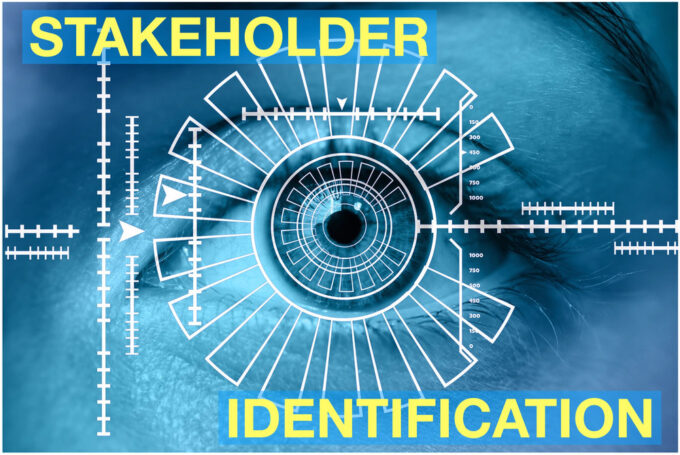You’re here, so we assume you want to take your stakeholder management skills to the next level, right? Good. If that’s why you’re here, we’ll get along just fine.
Today, we’re going to talk about what it takes to organize, monitor and improve your relationship with your stakeholders. In other words, we’re going to teach you how to efficiently manage them without managing them, whether it takes a stakeholder engagement software or a few tricks from the age-old playbook. Either way, by the time you’re done with this article – you’ll know what to do.
So, without further ado – let’s get right to business.
Why Should You Do It In The First Place?

This might sound like a weird question to ask, but it really isn’t. It is not enough to do something just because it needs to be done. If that’s the reason for doing something, you’re going to find yourself cutting corners at every turn, and you don’t have to be a managing wiz to understand how that’s going to work out.
Developing and maintaining good relationships with stakeholders is a vital part of every business. That means you’ll have to identify your stakeholders, understand their interests and invest your time to come up with a good engagement strategy. If you do this, you’ll be able to see things from a different perspective, which will help you get on the same page with your stakeholders, and we don’t have to say to you how vital that is for every business.
Identify The Stakeholders

The first and arguably the most important step towards improving your relationships with your stakeholders is often overlooked. It shouldn’t be. The key to making this work is identifying who your stakeholders are and what is their role in the whole scope of things.
Now, depending on the scope of your business, doing this will be either hard or easy, but whether you like it or not – it needs to be done. If there are many stakeholders you have to identify, then you should probably reach out for help.
Do you remember when we said you might need to rely on stakeholder engagement software? Well, according to Borealis, if you do have to identify a large number of stakeholders, that’s what you should probably do. Delegate that part of the responsibility to the stakeholder management software, and focus your time on nurturing the relationships once the time comes.
Divide Them Into Groups
It doesn’t matter how many stakeholders there are, they almost always fall into the same two groups – the ones that are invested in the project and the ones that are affected by the project. You could even split those two into the ones that are directly involved, the ones that have some sway over decisions, and the ones that only need to be kept in the loop.
Either way, the best way to make everyone happy is to divide them into these groups, which would pretty much solve the organizing part of managing stakeholders. Also, you’ll know who’s who and what you need to do, which would make the monitoring part of managing stakeholders easier, too. And, if you can’t do all of this on your own – there’s always software to rely on.
Communicate Openly

Now that we’re pretty much done with organizing and monitoring, we can focus on the part where you improve your relationships with stakeholders to make your ship sail smoothly. The first step towards achieving that would be open and transparent communication.
By that, we mean as open and transparent as needed, because as we’ve previously established, not everyone’s equally invested, which means not everyone deserves the same treatment. This might not seem like the best way to improve relationships, but it actually is. You don’t go for advice to a stakeholder that’s only there to observe and reap the benefits, and if you do, the one you’re supposed to go to, might feel undermined or disrespected, and we assume that’s not what you’re going for.
Earn Their Trust

Trust is the foundation of every single relationship you’re ever going to have, and that includes business relationships, as well. If you want stakeholders on your side and not to have them question or undermine your decision-making along the way, you’re going to have to earn their trust by showing them you know what you’re doing.
That does not only include making good business decisions, because quite frankly, even if you do, you still might not see eye to eye with some of them, but if you gain their trust, you might just make them let you do what you do best. After all, everyone’s goal is the same, and that’s to make money and stay in business, and if you show them they can trust you, they will back you even if they want to oppose you in the first place.
Stay On Course
We’ve said that the goal of this whole thing is to have your ship sail smoothly, but unless you stay the course – that’s not going to be possible. Now, we’ll abandon the metaphor for a second now because it is important that you know what we’re talking about here.
What we’re talking about is staying consistent with your messaging and keeping surprises to a minimum. Nobody wants to be blindsided – not in football, not in business. Inconsistent messaging and common surprises can only lead to problems, and we’re not only saying between you and the stakeholders. We also mean between you and the public. A good reputation is really hard to build, but a negative one will take in an instant, so make sure you do all you have to do to prevent that from ever happening.
Keep The Troublemakers In Check

Maintaining and improving relationships with stakeholders won’t be easy. In fact, it will often be hard, especially with the ones reluctant to change. With some of them, you’ll never going to get on the same page with, but that’s okay. There are always some bad seeds. But, the thing is, you don’t have to make peace with them – you just have to keep them in check.
Handling the troublemakers the right way will instil trust with the other ones and will show the ones you’re on good terms with that you are willing to do what you need to do to protect your mutual interests, even if it means disagreeing with someone else.
Final Thoughts
As you can see, managing stakeholders won’t be easy. Sometimes, you’ll even have to disagree with some of them or hurt your relationship with some of them to strengthen the ones that are more valuable to you and to the business.
We never said it was going to be easy, but we did say that we’re going to give you some good advice, and we hope you feel like we did.









